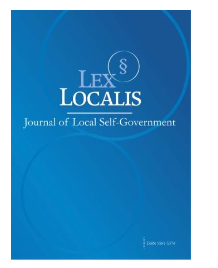FINANCIAL PERFORMANCE ANALYSIS OF SAUDI ALRAJHI BANK (2008-2024)
DOI:
https://doi.org/10.52152/pvwx7e15Keywords:
Al Rajhi Bank, Financial performance, Liquidity ratios, Non-performing loans, Solvency indictor, Profitability ratios, Utilization ratio.Abstract
Purpose ‒ This study examines Al Rajhi Bank's financial results over the period from 2008 to 2024. Financial ratios, including liquidity ratios, solvency indicators, non-performing loans, profitability ratios, and utilization ratios, are used to highlight the positive and negative aspects of the bank's financial performance and provide recommendations for improvement.
Methodology - The study utilized an analytical approach to examine the financial data gathered from the financial reports of Al Rajhi Bank and the Saudi Central Bank covering the period from 2008 to 2024. The purpose of the analysis was to evaluate the bank's financial performance.
Findings ‒ The findings suggest that the bank's liquidity ratio might require adjustment to adequately address obligations, including unexpected or significant withdrawal demands. The bank's solvency indicator has generally decreased over time; however, a recovery in solvency began in 2022, indicating that the bank has made significant efforts to improve its solvency and capital. During the study period, the percentage of non-performing loans declined, and the return on equity rose, resulting in profits that suggest the bank is highly efficient in its asset managementThe bank's efficiency ratio fell, indicating that it managed its expenses effectively in relation to revenue growth. Additionally, the efficiency ratio has declined over time, suggesting ongoing improvement in expense management relative to revenue growth. A study of the utilization ratio indicates a trend toward increased lending following 2020. To address the risks that arise from lending beyond its deposit base, the bank must prioritize strong liquidity management and implement effective risk controls. Furthermore, improving customer engagement and exploring new financial products could enhance revenue streams, allowing the bank to sustain its growth trajectory. As the financial landscape evolves, strategic investments in technology and innovation will be crucial for staying competitive and meeting customer demands.
Originality- This paper provides an original contribution by analyzing the financial performance of Al Rajhi Bank, the largest Islamic bank in Saudi Arabia and one of the most important banks in the world, over a 17-year period from 2008 to 2024. It analyzes liquidity, financial solvency, non-performing loans, profitability, efficiency, and utilization ratios, making the analysis comprehensive. Previous studies, on the other hand, focused on a limited analysis of profitability and liquidity ratios in Saudi banks.
This research is an addition to the literature by focusing on Al Rajhi Bank, as this focus provides academic insights for researchers and practical insights for stakeholders, investors, depositors, and the regulatory bodies of the Saudi Central Bank.
Research Implications ‒ The results of the study are based on historical data and may not fully reflect the current or future performance of the bank.
Practical Implications-The results provide important managerial and operational insights for Al Rajhi Bank in order to enhance its market value and competitive advantage and fulfill its mission towards society. The study emphasizes the importance of analyzing the financial performance to identify the positives and negatives, which contribute to the process of making and taking financial decisions to contribute to the stability and efficiency of the bank's financial performance.
Downloads
Published
Issue
Section
License
Copyright (c) 2025 Lex localis - Journal of Local Self-Government

This work is licensed under a Creative Commons Attribution-NonCommercial-NoDerivatives 4.0 International License.








